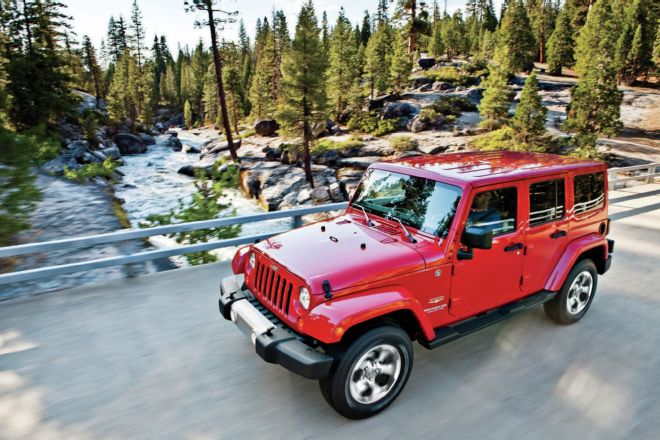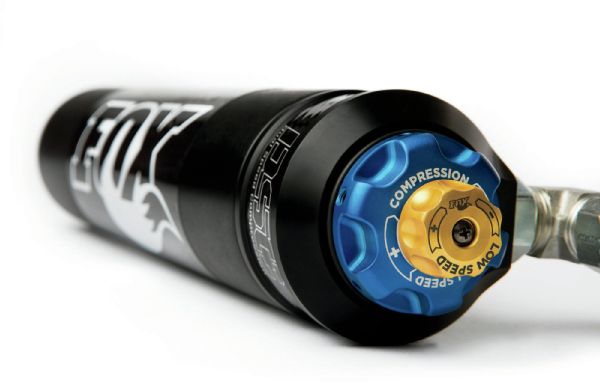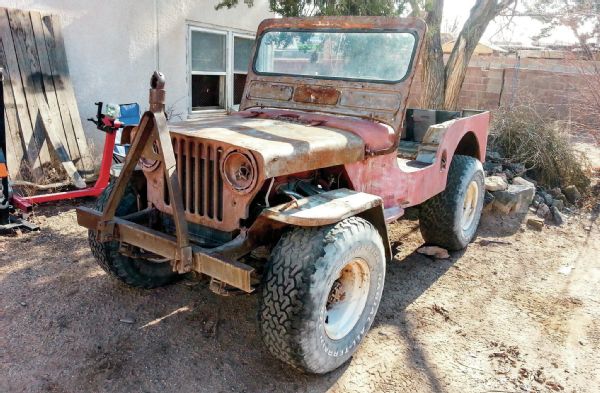
 John Cappa
Former Editor, Four Wheeler
John Cappa
Former Editor, Four Wheeler
Best Loaded Lift
I have enjoyed Jp for years. I just bought my second Jeep. I was tired of getting beat up by my old YJ. At 65 years old, I'm ready for some comfort. The new Jeep is a '04 Wrangler with 125,000 miles on it. It has 31-inch tires, a winch, and a hardtop. The suspension needs help. The frontend is sagging, and there is not enough clearance for the 31s. I was thinking about a 2 to 21⁄2-inch lift. I'm happy with 31s but I may go to 32-inch tires eventually. I have been looking at the ARB Old Man Emu (OME) lifts. Most lift kits seem to come in inches of lift. OME gives you options such as winch, hardtop, gear, and so on. This is an all-purpose Jeep. We live on small ranch, so it's a ranch Jeep and a drive-to-town Jeep, and every summer we spend month or so in Colorado. I plan on adding roof rack for a kayak. I also carry lots of gear to Colorado. At some point I will likely add a towbar so it can be towed to Colorado. I'm looking to get room for 31s with good ride and not a bunch of changes to the drivetrain.
Wayne Rossi
Austin, Texas
Given the hardtop, winch, and the variety of hauling tasks that the Jeep performs, I think you're on the right track with the ARB (arbusa.com) OME 2-inch lift kit. I would recommend the OME Heavy Kit (PN OMETJHKS). Two inches is about as far as you want to go without installing a slip-yoke eliminator kit and CV rear driveshaft. The lift will easily clear 31-inch tires. The 32s can be made to fit with the proper wheel selection. The OME Heavy Kit suspension will ride a little firmer than the standard suspension kit when the Jeep is unloaded, but the suspension won't sag as much when loaded up for trips.
Increase Tow Capacity
I own a '09 Jeep Wrangler Rubicon Unlimited and was wondering if there is any way of increasing the tow capacity. I'm of retirement age now and was thinking of getting a 16-foot self-contained trailer, but the Unlimited will not (or is not rated) to tow anything that is over the 3,500-pound range.
Doug Schaffernoth
Via email
Unfortunately, there really is no reasonable and safe way of increasing the tow capacity of your Wrangler Rubicon Unlimited. There are many factors that are taken into consideration when the tow capacity is derived by the manufacturer. This includes power, drivetrain longevity, suspension, frame strength, braking, stability, cooling capacity, and more. If a self-contained travel-trailer is in your future, you might want to consider a Jeep that is designed to haul heavier loads, such as the Grand Cherokee. The Grand has a tow capacity of up to 7,400 pounds, depending on the options you select.
No Lift Shock Input
I own a '12 Jeep Wrangler Unlimited Arctic, and I am looking for tests of aftermarket shocks on non-lifted Wranglers. I am currently using a set of Bilstein shocks, but they don't seem to help handling much. Have you ever tested Fox and/or King shocks on a non-lifted Wrangler JK?
Also, I have been told that the exhaust manifold is integral with the heads and that no headers exist for the '12 model. Is that true? I have supercharged my 3.6L V-6 with the Magnuson supercharger and a Squires Performance tune, and it runs great! I subscribe to your magazine because you say you are for "All Jeeps," yet I haven't found any articles on non-lifted Jeeps. Please keep those of us in mind that don't go rockclimbing or mud diving. I rarely drive on a dirt or gravel road, but I do drive and corner faster than most.
Ronald Corte
Via email
Fortunately, many of the same suspension principles and components we cover for lifted Jeeps can be easily applied to non-lifted Jeeps. Everyone has a different driving style and ride preference. It sounds like you prefer a slightly firmer and sportier suspension. You have a couple of options to help make your Jeep a better corner carver. Your aftermarket Bilstein (bilstein.com) shocks can be rebuilt, revalved, and tuned for more performance and a firmer ride. Unfortunately, your particular model shocks cannot be revalved at home. You have to ship them back to Bilstein.
Fox (ridefox.com) doesn't offer a bolt-in off-the-shelf shock that fits a non-lifted JK. The minimum lift is 11⁄2 inches. That's not to say that Fox can't build you a custom shock. The company probably can, but you would have to call Fox directly. If you go this route, I highly recommend adding the DSC reservoirs to your order. The DSC knobs give you the ability to externally adjust the low and high speed compression valving. You'll be able to tune in the ride and handling that you want. This is probably the most ideal solution, although it will not be an inexpensive one.

King Shocks (kingshocks.com) offers bolt-in OEM Performance Series shocks that fit Jeep JK Wranglers with 0-2 inches of lift. I would recommend the 21⁄2-inch-diameter remote-reservoir shocks with the compression adjuster. Like the Fox shocks, they will be total overkill for your application, but they will give you the firmer ride you are looking for along with some adjustability.
You might want to also look into the ARB (arbusa.com) Old Man Emu BP-51 shocks. There is a JK application being developed, and it should be available by the time you read this. The BP-51 shocks are internal bypass shocks with compression and rebound adjustability. Again, they will be total overkill for your application, but they will provide the adjustability and sporty handling you are looking for.
It's true that the exhaust manifold structure is built into the heads of the 3.6L Wrangler Pentastar V-6. This design helps eliminate exhaust leaks at the manifolds. There is no need for a header. To increase performance, you could remove the heads and have them ported, though.
Keepin' it Cheap
I just picked up a super-clean '98 TJ Sport with a hardtop, 4.0L, five-speed manual transmission, limited-slip Dana 44 rearend, and 3.73 gears. My hard-wheeling days are not what they used to be. My dilemma is whether to do a 2-inch budget boost with adapted JK 255/75R17 tires and wheels (I work at a dealership so we have a few take offs laying around) or to step up to a 3-inch suspension lift and run 285/70R17 tires. One is 32 inches in diameter and the other is just shy of 33 inches. I'm trying to avoid doing a regear at this moment.
Eric Faley
Via email
If you decide to step up into the 3-inch lift, you'll also want to budget in a slip-yoke eliminator kit and CV rear driveshaft. It becomes pretty much mandatory at about 21⁄2 inches of lift. The driveline vibration from a 3-inch lift without the slip-yoke eliminator is enough to drive most people bonkers. The resulting vibration wears out the transfer case rear output seal and rear driveshaft prematurely, which can lead to transfer case failure. So, if a slip-yoke eliminator and CV rear driveshaft are off the table, go with the 2-inch budget boost. The 3.73 gears will be fine matched up with the 4.0L, manual transmission, and 32-inch tires.
Four-Link Query
I have a question concerning the installation of a rear four-link kit on a Jeep XJ Cherokee. If I was to install a rear four-link kit, will I be able to pull a loaded 8x10-foot utility trailer? I've searched the web, and I'm getting no answers. I like how much flex I would gain versus the leaf springs, but I still want to be able to pull the trailer. Any information will be appreciated.
Adam Carr
Via email
Switching to a four-link rear suspension won't necessarily make your XJ incapable of towing. Many vehicles with four-link rear suspensions tow trailers just fine, including the Jeep JK Wrangler and ZJ, WJ, and WK Grand Cherokees, among others. The key is in how you set up the suspension. When towing the trailer, you'll want to make sure you have a heavy rear sway bar to help control the suspension movement in corners and in windy conditions. You'll also want to use dual-rate springs or, better yet, coilover shocks with dual rate springs and compression adjusters. Properly selected and adjusted dual-rate springs will help keep the suspension from overly compressing under the tongue weight of the trailer, without killing your unloaded off-road performance. The compression adjusting feature will give you the ability to slow the movement the heavy trailer when it hits big bumps in the road and switch back to normal for a smooth on- and off-road ride when not towing. It might take some time to get the rear suspension tuned to work great in both scenarios, but it's totally doable.
Editor Trasborg adds: I did it with my TnT Customs rear four-link coil conversion. While they weren't happy I was beating the Jeep, it did fine. Squat was great. Torque steer nonexisting. The only issue was I killed the rear shocks super fast. A set of Rock Krawler RRD shocks fixed that issue, and afterward I had no problems.
Cranky Old Iron
I purchased this Willys Jeep for $500. The data plate is missing, but from what I was told, it's a '53 CJ-3A. It has a GM 350 V-8, a TH350 automatic transmission, and a Dana 18 transfer case with a Warn overdrive. The engine is a '72 model (block number 3970014). I have no idea what the year of the transmission is. I have four questions:
Thanks for taking the time to read this, and keep up the great work!
David Sanchez
Via email

Write Us!
Got a tech question you're just itching to get answered? Send it on in to Jp Magazine, Your Jeep, 831 S. Douglas St., El Segundo, CA 90245, or e-mail it to jpeditor @jpmagazine.com.